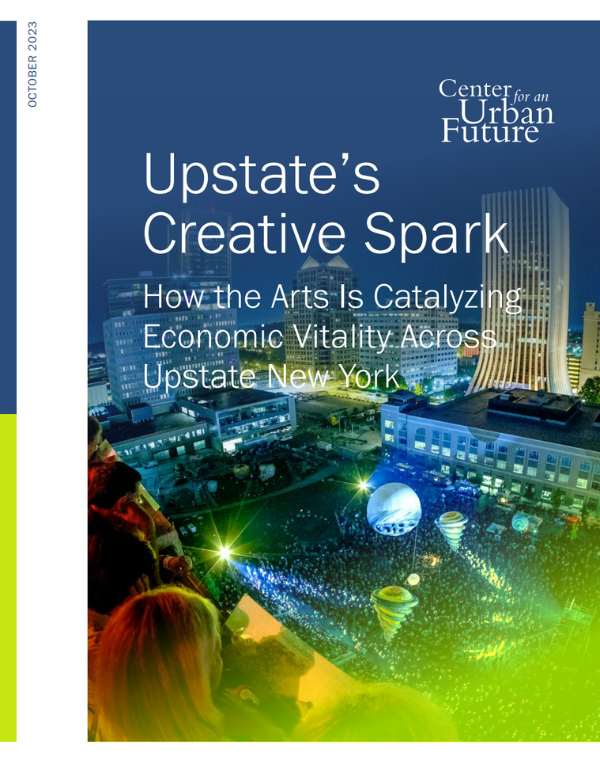Remarks of Eli Dvorkin
Editorial & Policy Director, Center for an Urban Future
Before the New York State Senate and Assembly for Arts Day
on Harnessing the Arts to Boost Economic Vitality in Cities Statewide
February 11, 2025
Good morning. I’m Eli Dvorkin, editorial and policy director at the Center for an Urban Future, an independent think tank focused on creating a stronger and more equitable economy in New York. Thank you Senator Serrano and Assemblymember Kim for the opportunity to speak today.
New York has attempted countless economic development efforts over the years designed to spark lasting economic growth. Our research shows that few initiatives have had as powerful an economic and social impact as an often overlooked catalyst: the arts.
Employment in the arts and culture sector across upstate New York surged 39.3 percent from 2013 to 2023, nearly 15 times the overall rate of employment growth upstate. Likewise, the culture sector grew 26.5 percent in NYC, nearly double the city’s rate of job growth.
Working artists are among the few segments of the population consistently growing in upstate communities. In fact, the resident artist population grew 21 percent across upstate New York and 16 percent in NYC over the past decade—a time when many New York cities have seen little overall population growth and the under-65 population decreased.
The economic vitality sparked by the arts sector has created conditions for sustainable economic growth and helped drive up tourism spending by more than 30 percent from 2017 to 2023. The growth of the arts and cultural sector has breathed new life into downtowns, encouraged entrepreneurs to start new businesses and expand existing ones, spurred the development of desperately needed new housing, and incentivized young people who grew up or earned degrees locally to stay in their communities and put down roots.
Artists and arts organizations have been getting the job done where many have struggled to deliver, but have done so with limited public support.
The primary grantmaking budget for the New York State Council on the Arts fell by 35.6 percent over the past 15 years, after adjusting for inflation. Fortunately, the state has stepped up funding to NYSCA in the past two budget cycles, but even this additional $40 million makes total operating grant funding about one-third lower than in 1990.
At the same time, funding from the National Endowment for the Arts to New York has dwindled over the past four decades and is likely to fall further. The state should prepare for this reality by boosting NYSCA’s budget for operating grants to at least $100 million, shoring up the sector against accelerating divestment from Washington.
New York’s direct investment in the arts is a drop in the bucket compared to the state’s investments in economic development tools, which often overlook the arts sector. But this is beginning to change.
The first two rounds of REDC grants awarded since the release of our 2023 report included a record 10 to 18 percent of all funds flowing to the arts—up from just 3.7 percent in 2021. However, arts investments are still a small fraction of New York’s economic development portfolio. Boosting the representation of the arts and culture sector on the REDCs is one key place to start.
Going forward, the state should seize opportunities to weave support for the arts across government.
Place-based economic development investments should combine support for local arts and cultural districts with technical assistance to help arts organizations access these funding streams and funding for artists to activate public space. The state could also consider tying a portion of major capital grant funding to public art projects, greatly expanding the impact of the current state-level Percent for Art program.
The state’s promising new artist-in-residence program is beginning to take shape, thanks to investments in last year’s budget. It should launch this year and then expand to county and local governments, too.
And the state should consider new revenue-generating ideas to help pay for these needs, such as a modest surcharge on tickets sold at stadiums and arenas to support local arts and parks.
Thank you for your support for artists and cultural organizations across New York, and for the opportunity to speak today.
_289_388_bor1_a4a4a4.png)


